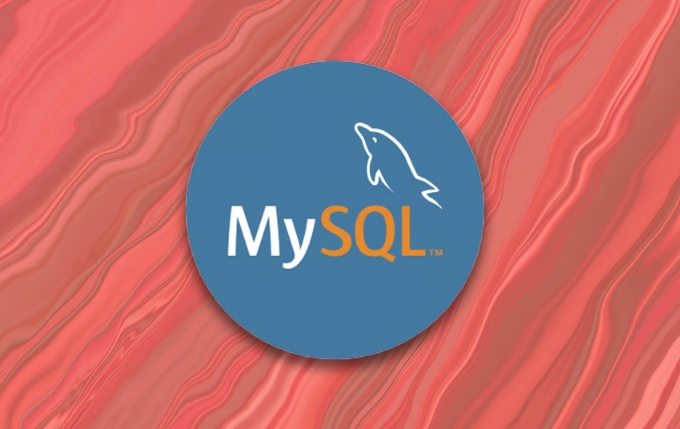MySQL UDF is a user-defined function written in C/C and compiled into a shared library and registered with MySQL for efficient implementation of specific logic. 1. UDF is suitable for computational operations such as string processing, mathematical operations, etc., with higher execution efficiency than stored procedures; 2. The creation steps include writing code, compiling into .so files, placing them in MySQL accessible directories, and registering them with CREATE FUNCTION; 3. When using it, you need to pay attention to compatibility, stability, debugging difficulty and deployment complexity. It is recommended to be used only when high-performance requirements and SQL is difficult to implement; 4. Alternative solutions include storage functions, triggers, application-layer processing or MySQL plug-in systems, which can be selected according to actual needs.

MySQL's user-defined functions (UDFs) are a very practical feature, especially when you need to extend database functions, implement specific logic but don't want to process them at the application level. If used well, it can simplify queries, improve performance, and also make the code cleaner.

Here are some key points and suggestions about MySQL UDF, suitable for developers who want to know or are using UDF.
What is MySQL UDF?
MySQL UDF is the abbreviation of "User Defined Function", which means that you can write a function yourself and then call it in SQL queries like built-in functions. This function is usually written in C/C, compiled into a shared library (.so file), and then registered in MySQL.

Unlike stored procedures, UDF prefers to implement some computational operations, such as string processing, mathematical operations, encryption and decryption. It is also usually more efficient in execution.
How to create a UDF?
The steps to create a UDF mainly include:

- Write C/C functions to implement basic logic
- Compile into a shared library (for example:
my_udf.so) - Put the
.sofile in a directory that MySQL can access - Register this function in MySQL via the
CREATE FUNCTIONcommand
To give a simple example: you want to implement a function calculate_age(birthdate) , enter the date of birth, and return the age. You can implement this logic in C, register it as a UDF after compilation, and use it directly in SQL:
SELECT name, calculate_age(birthdate) AS age FROM users;
It should be noted that MySQL has strict security mechanisms for UDF, and it is necessary to ensure that the .so file path is correct and that MySQL users have permission to read the file.
Notes on using UDF
Although UDF is very powerful, there are several places where you can easily get stuck:
- Compatibility issues : Different versions of MySQL support for UDFs varies slightly, especially in terms of thread safety.
- Stability risk : If there is a problem with the UDF code (such as a memory leak or a segfault), it may cause the entire MySQL process to crash.
- Debugging difficulty : It is not as easy to debug as application-layer code. Generally, it is necessary to use logs or gdb and other tools to troubleshoot problems.
- Complex deployment : Each update requires recompiling, replacing the
.sofile and restarting MySQL or reloading the function.
Therefore, it is recommended to use UDF only if high performance is really required and cannot be implemented with SQL or stored procedures.
What are the alternatives?
If you just want to implement some simple logic, you don't have to use UDF. The following methods can also be considered:
- Stored Function : Suitable for situations where logic is not too complicated and performance requirements are not extreme.
- Trigger : Some operations can be performed automatically when data changes.
- Application-level processing : Putting logic in a program makes it easier to maintain.
- Plugin systems (such as MySQL Plugins) : Some plugins also provide UDF-like functions, which are even more flexible.
Which method to choose depends on your actual needs and the team's technology stack.
Basically that's it. MySQL UDF is not particularly difficult to use, but it does have some barriers, especially during the development and debugging stages. If you are just doing regular business development, you may not need to use it often; but once you encounter bottlenecks or want to optimize some complex logic, it is a very worthwhile tool.
The above is the detailed content of mysql user defined functions (udf). For more information, please follow other related articles on the PHP Chinese website!

Hot AI Tools

Undress AI Tool
Undress images for free

Undresser.AI Undress
AI-powered app for creating realistic nude photos

AI Clothes Remover
Online AI tool for removing clothes from photos.

Clothoff.io
AI clothes remover

Video Face Swap
Swap faces in any video effortlessly with our completely free AI face swap tool!

Hot Article

Hot Tools

Notepad++7.3.1
Easy-to-use and free code editor

SublimeText3 Chinese version
Chinese version, very easy to use

Zend Studio 13.0.1
Powerful PHP integrated development environment

Dreamweaver CS6
Visual web development tools

SublimeText3 Mac version
God-level code editing software (SublimeText3)

Hot Topics
 What is GTID (Global Transaction Identifier) and what are its advantages?
Jun 19, 2025 am 01:03 AM
What is GTID (Global Transaction Identifier) and what are its advantages?
Jun 19, 2025 am 01:03 AM
GTID (Global Transaction Identifier) ??solves the complexity of replication and failover in MySQL databases by assigning a unique identity to each transaction. 1. It simplifies replication management, automatically handles log files and locations, allowing slave servers to request transactions based on the last executed GTID. 2. Ensure consistency across servers, ensure that each transaction is applied only once on each server, and avoid data inconsistency. 3. Improve troubleshooting efficiency. GTID includes server UUID and serial number, which is convenient for tracking transaction flow and accurately locate problems. These three core advantages make MySQL replication more robust and easy to manage, significantly improving system reliability and data integrity.
 What is a typical process for MySQL master failover?
Jun 19, 2025 am 01:06 AM
What is a typical process for MySQL master failover?
Jun 19, 2025 am 01:06 AM
MySQL main library failover mainly includes four steps. 1. Fault detection: Regularly check the main library process, connection status and simple query to determine whether it is downtime, set up a retry mechanism to avoid misjudgment, and can use tools such as MHA, Orchestrator or Keepalived to assist in detection; 2. Select the new main library: select the most suitable slave library to replace it according to the data synchronization progress (Seconds_Behind_Master), binlog data integrity, network delay and load conditions, and perform data compensation or manual intervention if necessary; 3. Switch topology: Point other slave libraries to the new master library, execute RESETMASTER or enable GTID, update the VIP, DNS or proxy configuration to
 How to connect to a MySQL database using the command line?
Jun 19, 2025 am 01:05 AM
How to connect to a MySQL database using the command line?
Jun 19, 2025 am 01:05 AM
The steps to connect to the MySQL database are as follows: 1. Use the basic command format mysql-u username-p-h host address to connect, enter the username and password to log in; 2. If you need to directly enter the specified database, you can add the database name after the command, such as mysql-uroot-pmyproject; 3. If the port is not the default 3306, you need to add the -P parameter to specify the port number, such as mysql-uroot-p-h192.168.1.100-P3307; In addition, if you encounter a password error, you can re-enter it. If the connection fails, check the network, firewall or permission settings. If the client is missing, you can install mysql-client on Linux through the package manager. Master these commands
 Why is InnoDB the recommended storage engine now?
Jun 17, 2025 am 09:18 AM
Why is InnoDB the recommended storage engine now?
Jun 17, 2025 am 09:18 AM
InnoDB is MySQL's default storage engine because it outperforms other engines such as MyISAM in terms of reliability, concurrency performance and crash recovery. 1. It supports transaction processing, follows ACID principles, ensures data integrity, and is suitable for key data scenarios such as financial records or user accounts; 2. It adopts row-level locks instead of table-level locks to improve performance and throughput in high concurrent write environments; 3. It has a crash recovery mechanism and automatic repair function, and supports foreign key constraints to ensure data consistency and reference integrity, and prevent isolated records and data inconsistencies.
 Why do indexes improve MySQL query speed?
Jun 19, 2025 am 01:05 AM
Why do indexes improve MySQL query speed?
Jun 19, 2025 am 01:05 AM
IndexesinMySQLimprovequeryspeedbyenablingfasterdataretrieval.1.Theyreducedatascanned,allowingMySQLtoquicklylocaterelevantrowsinWHEREorORDERBYclauses,especiallyimportantforlargeorfrequentlyqueriedtables.2.Theyspeedupjoinsandsorting,makingJOINoperation
 What are the ACID properties of a MySQL transaction?
Jun 20, 2025 am 01:06 AM
What are the ACID properties of a MySQL transaction?
Jun 20, 2025 am 01:06 AM
MySQL transactions follow ACID characteristics to ensure the reliability and consistency of database transactions. First, atomicity ensures that transactions are executed as an indivisible whole, either all succeed or all fail to roll back. For example, withdrawals and deposits must be completed or not occur at the same time in the transfer operation; second, consistency ensures that transactions transition the database from one valid state to another, and maintains the correct data logic through mechanisms such as constraints and triggers; third, isolation controls the visibility of multiple transactions when concurrent execution, prevents dirty reading, non-repeatable reading and fantasy reading. MySQL supports ReadUncommitted and ReadCommi.
 What are the transaction isolation levels in MySQL, and which is the default?
Jun 23, 2025 pm 03:05 PM
What are the transaction isolation levels in MySQL, and which is the default?
Jun 23, 2025 pm 03:05 PM
MySQL's default transaction isolation level is RepeatableRead, which prevents dirty reads and non-repeatable reads through MVCC and gap locks, and avoids phantom reading in most cases; other major levels include read uncommitted (ReadUncommitted), allowing dirty reads but the fastest performance, 1. Read Committed (ReadCommitted) ensures that the submitted data is read but may encounter non-repeatable reads and phantom readings, 2. RepeatableRead default level ensures that multiple reads within the transaction are consistent, 3. Serialization (Serializable) the highest level, prevents other transactions from modifying data through locks, ensuring data integrity but sacrificing performance;
 How to add the MySQL bin directory to the system PATH
Jul 01, 2025 am 01:39 AM
How to add the MySQL bin directory to the system PATH
Jul 01, 2025 am 01:39 AM
To add MySQL's bin directory to the system PATH, it needs to be configured according to the different operating systems. 1. Windows system: Find the bin folder in the MySQL installation directory (the default path is usually C:\ProgramFiles\MySQL\MySQLServerX.X\bin), right-click "This Computer" → "Properties" → "Advanced System Settings" → "Environment Variables", select Path in "System Variables" and edit it, add the MySQLbin path, save it and restart the command prompt and enter mysql--version verification; 2.macOS and Linux systems: Bash users edit ~/.bashrc or ~/.bash_






